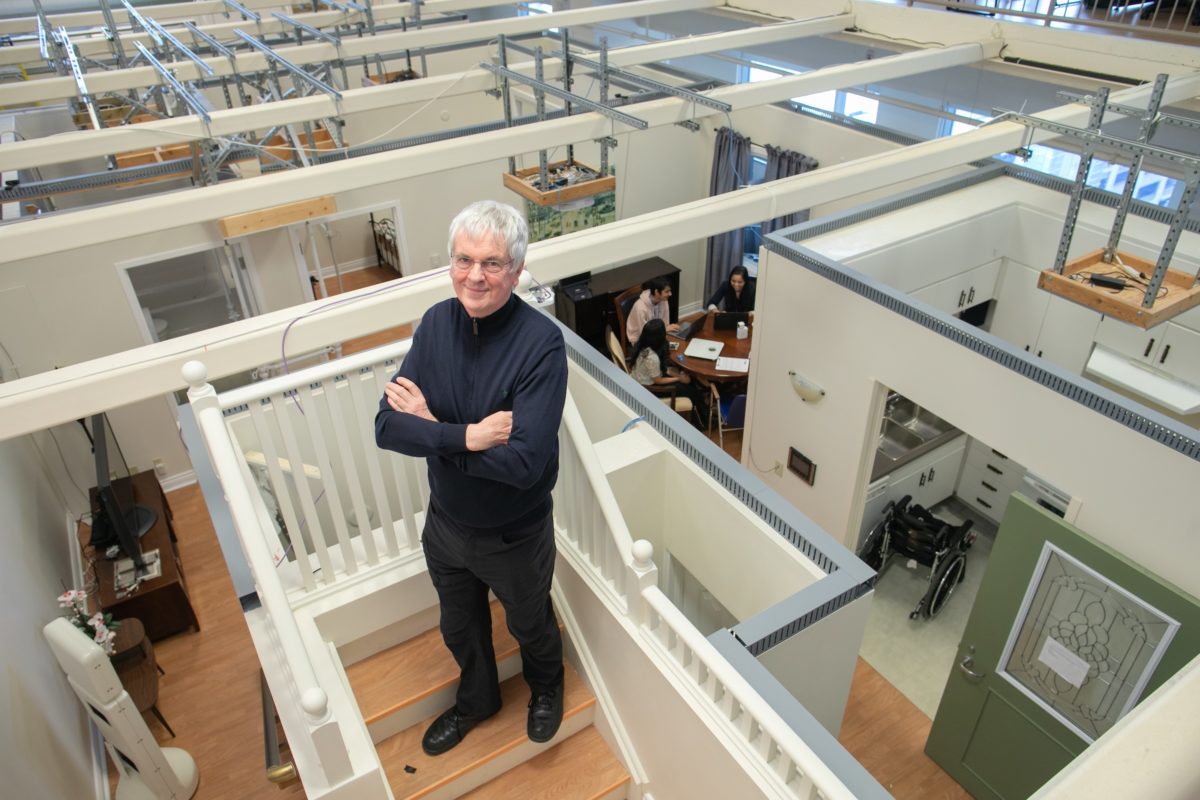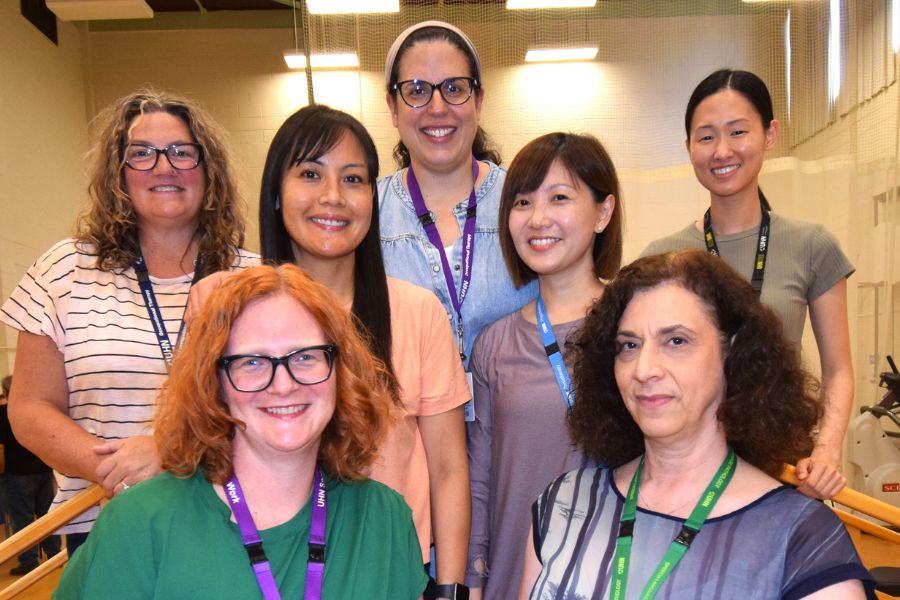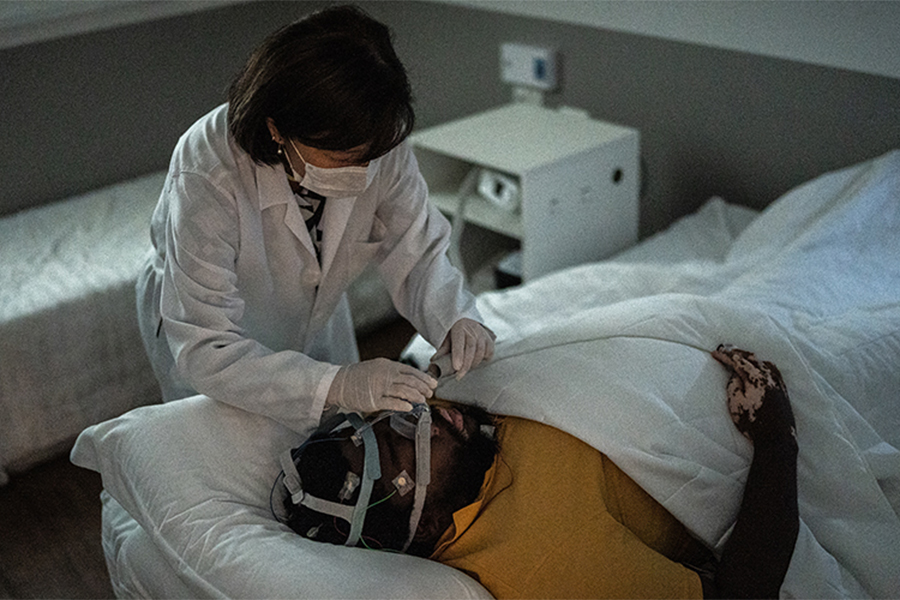(Photo: The KITE Research Institute at UHN)
Toronto Rehab’s KITE Research Institute at University Health Network researchers are developing cutting edge technology designed to help aging Canadians live in their homes as long as they want.
When Ron Beleno’s father, Rey, was diagnosed with Alzheimer’s Disease in 2007, he made it clear to his family that he wished to remain in his own home as long as possible. He felt that being at home would be most comfortable and would give him some semblance of independence. Fortunately, Beleno, who was in his late 20s at the time, was able to take on the role of caregiver and keep his ailing father at home until he passed away in early 2018.
While it wasn’t easy to manage work and caregiving – he’s an entrepreneur and an aging-in-place advocate with busy hours – he wanted to respect his dad’s wishes, and he knew that having him at home would immeasurably improve the final years of his life.
“Aging in place really comes down to choice. It’s about the values of an individual and their own wishes and dreams,” Beleno says. “Care facilities can be the right choice depending on the circumstances, but for many people, like my dad, leaving their own home means giving up comfort, family, their social networks and quality of life.”
Beleno was able to make at-home caregiving manageable, in part, because he put his computer science background to work. He implemented various technologies, from low-tech physical aids like poles and handgrips to keep his dad from falling, to higher-tech video cameras and GPS trackers that allowed Beleno to keep an eye on his dad while he was away.
If other people had access to the same kind of technology that he did, then more seniors would likely stay at home after becoming ill, he believes. It’s an issue that’s become even more urgent in the face of COVID-19 as families do their best to keep loved ones away from viral spread in long-term care facilities, while simultaneously trying to have as little face-to-face contact as possible.
“Technically, anyone can age in place if they have unlimited resources, but we send people to care facilities because there are more resources and a better base of knowledge there,” Beleno notes. “If an at-home caregiver is supported by the right tools, the person who they’re caring for can age in place much longer.”
Technical support
Beleno’s experience has led him to work as an advisor with AGE-WELL, a technology and aging network that supports the development of technologies and services to help people age gracefully at home. It is federally funded through the Networks of Centres of Excellence, and works with researchers across the country.
AGE-WELL’s host institution is the University Health Network, and its physical home is at the Toronto Rehabilitation Institute, which has created a special bond between the organizations. Researchers at KITE, the research arm of Toronto Rehab and a frequent collaborator with AGE-WELL, have long understood that remaining at home provides a better aging experience than a nursing home.
In 2019, AGE-WELL conducted a poll that canvassed Canadians aged 50 and older on their feelings about aging, health and technology. Eighty per cent of respondents aged 50 to 64 said that they are confident using current technology, such as smartphones and GPS systems. That percentage fell to 74 per cent for respondents over the age of 65. But more than 80 per cent of that group do think technological advancements can help them stay safe, independent and remain in their own homes longer.
If that survey was done today, those numbers would likely be even higher. The pandemic has made people of all ages become more comfortable with technology and they now realize, more than ever, how tech-related tools can help them stay safe.
“There’s always some question if older Canadians are ready for technology to be part of their future,” says Bridgette Murphy, AGE-WELL’s managing director and chief operating officer. “But this cohort of Canadians is already using technology in large numbers and feels confident doing so. There is that belief that it can help older adults to stay at home for longer.”
Creating practical solutions
Over the last five years, AGE-WELL and KITE have worked together on a number of technology-based projects, with more than $36 million in federal funding being allotted to AGE-WELL’s work, which includes 126 different projects at 42 universities and research centres across Canada. Fourteen of those projects are being led by KITE.
Some of the initiatives that specifically help to facilitate aging at home include an intelligent fall detection system that uses artificial intelligence to alert caregivers not only if a person has fallen at home, but if the fall was a minor stumble or something that requires immediate assistance. It’s also doing research on self-driving cars that would help transport older adults from one place to another, and it’s developed a startup called Braze Mobility that fits wheelchairs with blind-spot sensors and anti-collision technology. The idea is that when pieced together, these systems will at least partially replace the need for 24-hour care.
“In Canada, if you want to look after someone 24 hours a day at home and you’re not actually living in the home yourself, it costs at least $130,000 a year to hire home care,” explains Dr. Geoff Fernie, a senior scientist at KITE and former research director, who has had considerable success developing assistive technologies. “Not many people can afford that. But if we’re going to make it realistic for large numbers of people, we’re going to have to use technology to help them to provide care for the person that they’re looking after.”
The kind of technology that Dr. Fernie is creating would best suit older Canadians who need some level of care in order to safely stay in their homes but may not have access to 24-hour care. Not meant to replace human caregivers, technology that monitors patients with dementia or other age-related diseases, or assists them in daily tasks, would mean that they’d be able to stay in their own homes without hiring full-time care staff or requiring family members to be with them constantly.

A PATH to independence
Simply throwing individual technologies at caregivers isn’t practical or affordable, and many good ideas don’t make the transition from the research phase to commercial product. One reason that happens, Dr. Fernie points out, is because of various technologies’ inability to “talk” to one another, so to speak. A fall detector may alert remote caregivers to a potential accident, but if other sensors successfully show that their loved one is moving around or that another person is in the house with them, there wouldn’t be a need to rush over or call an ambulance.
Dr. Fernie is working on a project that employs technology developed by SmartOne Solutions, an Ontario-based commercial tech company, which was initially designed to integrate online services in apartment and condo buildings. Dubbed PATH (Program to Accelerate Technologies for Homecare), the system will integrate various care tools and sensors with the SmartOne system, and will be eventually tested in 350 homes in Canada. The hope is that PATH will not just be more efficient, cost-effective and convenient for the home user, but for the healthcare system in general. As the population ages, it’s in everyone’s best interest to keep older Canadians out of costly full-time care as long as possible.
Creating caregiver confidence
Nothing can replace the expertise of medical professionals or the human connection of actual caregivers. So, for the most part, these technologies are designed to augment human care, give caregivers confidence that their loved ones are safe, and ease the burden on both home caregivers and the medical system as the population ages. If small barriers can be removed, more Canadians will be able to stay home longer, something that can give families peace of mind during the pandemic and beyond.
“I don’t think we’re trying to replace people,” Dr. Fernie says. “I’m certainly not keen on a robot helping someone’s mom into the bathtub. But there is a lot we can do with technology if we make it affordable and practical.”
While Ron Beleno was able to piece together a system that worked for his father, with video monitoring and assists to help his dad get safely around, he agrees with Dr. Fernie that being able to have a system that is both comprehensive and trustworthy is key. As a caregiver, fear that a loved one is unsafe is one of the biggest factors that sends older Canadians into care facilities earlier than necessary. Reliable technology like that being developed at KITE and through AGE-WELL’s funding may be a game changer for countless people across the country who wish to age in place as long as possible.
“The emotional pieces around being a caregiver are usually related to fear,” Beleno says. “So if we can support the caregiver with technologies, there is a much higher chance that the person will be able to age in place for much longer.”


